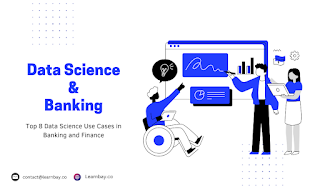9 Ways Airlines Improve Operations using Artificial Intelligence and Data Science
Technology alters how companies communicate with clients, make tactical choices, and design workflows. For instance, booking a flight over the phone seems strange or doing offline surveys nowadays. Real-time data access, known as the "oil of the 21st century," helps companies to make educated decisions that increase operational performance.
We talked about how participants in the aviation business employ cognitive technology to scale new heights with data science experts and AI startuppers. But first, look at our essay on the differences between terms like data science, AI, machine learning, and other contemporary buzzwords.
The primary uses of artificial intelligence and data science in the aviation sector
Analytics, machine maintenance, customer support, and many other internal processes and jobs may be streamlined and automated using artificial intelligence and cognitive technologies that make sense of data. As a result, several elements of managing airline operations can benefit from AI technology. To deeply understand AI techniques and tools, join the artificial intelligence course in Bangalore.
Revenue management
When data and analytics are used to define how to sell a product to those who need it, at a fair price, at the correct time, and via the proper channel, the process is known as revenue management (RM).
Its foundation is the notion that because consumers' perceptions of a product's worth vary, the price they are willing to pay for it relies on the target market to which they belong and the timing of the purchase. To maintain the airline both competitively and customer-friendly, revenue management professionals make good use of AI to identify destinations, change rates for certain markets, locate effective distribution channels, and manage seats.
Data scientist Konstantin Vandyshev, who formerly worked at Transavia's Revenue Management division, emphasizes the value of applying data science disciplines to revenue management activities.
Demanded flight routes
Willingness to pay
Expected marginal seat revenue (EMSR)
Ancillary price optimization
Air safety and airplane maintenance
Due to cancellations and delays, airlines literally endure a heavy financial burden, which includes maintenance costs and compensation for passengers stranded in airports. Predictive analytics utilized in fleet technical assistance is a suitable approach, given that unscheduled maintenance accounts for close to 30% of the overall delay time.
In order to effectively handle the data collected by aircraft health monitoring sensors, carriers use predictive maintenance technologies. These systems often work with desktop and mobile devices, giving professionals access to both current and past data wherever they are. Employees may proactively identify problems pointing to potential malfunctions and replace components by being aware of an aircraft's present technical state through alerts, notifications, and reports.
Feedback analysis
Even frequent and seasoned travelers whose passports are running out of blank pages and find flying difficult can experience this. Before settling into an aircraft seat and snapping a selfie, they had to do so many activities like checking luggage or locating a gate!
In this sense, airlines that discover via data analysis the difficulties of the airport and flight experience can enhance customer service. According to Briana Brownell, founder, and CEO of PureStrategy Inc., using AI for feedback analysis and market research enables airlines to make knowledgeable decisions and satisfy consumers' expectations.
Messaging automation
Travelers become anxious when a disturbance like a flight delay or a luggage loss happens. Customers will probably not pick this airline for their subsequent journey if they don't receive a response or explanation of an issue from an airline representative in a timely way. It is important to respond to consumer inquiries quickly, more so than the actual procedures done to resolve a problem.
From leveraging algorithms for interpreting natural language or unstructured text, artificial intelligence (AI) software, like Coseer by Arbot Solutions, accelerates and streamlines the operations of customer support representatives. "We are assisting airlines with categorizing consumer emails and extracting information from those emails so that they can automate some of the repetitive operations, such as information regarding misplaced bags,"
Crew management
Consider a department in charge of scheduling that needs to assign crews to each of the thousands of flights flown daily. That takes a lot of effort. To establish conflict-free schedules for pilots and flight attendants, experts take a variety of criteria into account, including flight route, crew member license and certification, aircraft type and fuel use, work laws, vacations, and days off.
In addition, government laws should be considered, such as aircraft maintenance schedules and training needs like matching senior crew members with junior ones.
Fuel efficiency optimization
Nearly 2% of anthropogenic carbon dioxide (CO2) emissions are caused by aircraft worldwide. Because of this, carriers and aircraft manufacturers work to increase fuel economy. The players in the aviation sector are motivated to employ technology to minimize carbon emissions for a variety of reasons, including both ecological and economical ones. According to Investopedia, airlines spend 10 to 12 percent of their operational expenses on fuel.
Airlines gather and analyze flight data pertaining to each route's distance and altitudes, aircraft type and weight, weather, etc., using AI platforms with integrated machine learning algorithms. Systems calculate the ideal quantity of fuel required for a trip based on data results.
In-flight sales and food supply
Many of us picture taking an airline trip while sipping coffee and eating a sandwich while taking in the passing clouds and a clear blue sky.
Supply management experts determine how many food and drinks may be brought on board without being wasteful in the meantime. AI is also here to support.
Fraud detection
Airlines reportedly lose over $1 billion a year as a result of payment fraud, according to IATA estimates. Several fraudulent tactics include using stolen credit cards, requesting compensation for "lost" luggage, setting up phony online travel companies, and so on.
Both fraud management strategies and fraud cases are growing increasingly complex. Airlines use sophisticated, machine learning (ML)-based analytics tools to evaluate data from several sources, identify fraudulent transactions, and improve passenger authentication and payment security. For additional information on these technologies and the primary strategies for managing fraud, see our page on fraud detection.
Future autonomous taxi, takeoff, and landing with flight management
Self-driving or autonomous vehicles are not science fiction anymore. The introduction of autonomous automobiles by pioneers like Waymo and Google years ago foretold a bright and hopeful future with several application areas. The concept appears basic. Numerous cameras must be installed on the car, and it must be "trained" to comprehend current traffic conditions and respond appropriately. In order to make this vision a reality, sophisticated machine-learning algorithms are required.
Take up the data science course in Bangalore, if you want to brush up on data science and AI Skills and work in MAANG companies.

.png)


Comments
Post a Comment